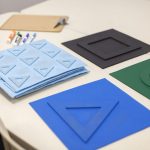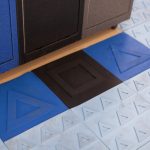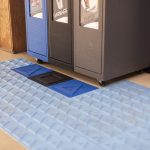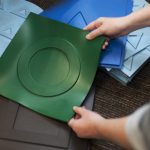New, accessible recycling bins for WLU campus
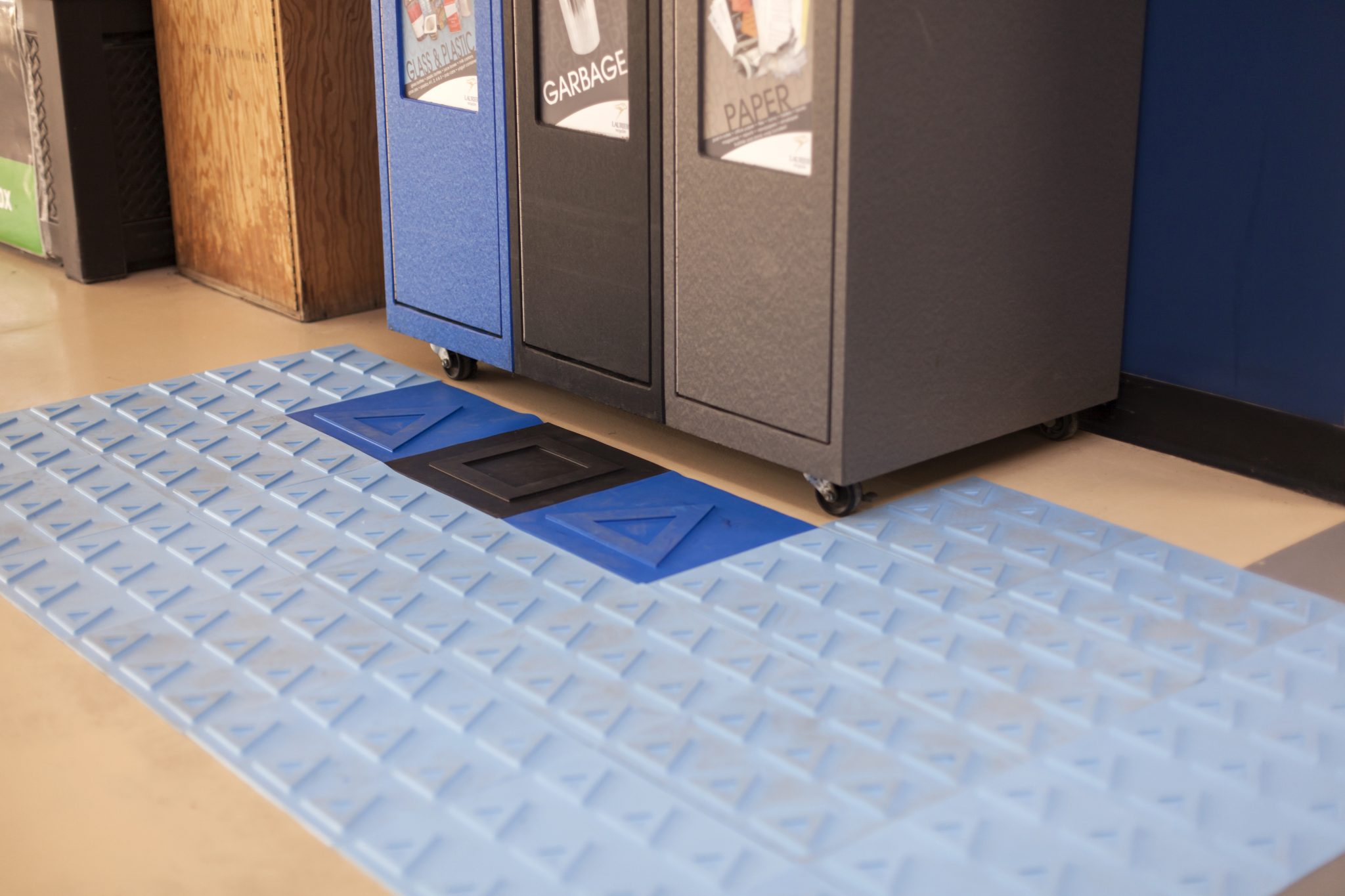
Hillary Scanlon, fourth-year global studies student at Laurier, has taken to creating accessible waste and recycling options on campus for those with vision impairments.
In order to easily distinguish between various waste options on campus, Scanlon has created numerous rubber floor signs.
The signs, which look like large stickers, are distinguishable from the rest of the floor, making them easy to locate for those passing by.
Each sign features the shape of waste symbols, such as the recycling triangle, in order for individuals to be able to easily distinguish where to appropriately dispose of their waste.
For Scanlon, the idea to make waste and recycling units on campus more accessible stems from a struggle she began to face in her everyday life.
“In the middle of my undergrad I unexpectedly lost the majority of my vision,” Scanlon said.
Scanlon has opsoclonus-myoclonus syndrome (OMS), a neurological condition which considers her legally blind.
“I was just kind of pushed into this world which was no longer accessible to me, that I hadn’t noticed before,” she said.
“With that, some frustrations arouse with things that I wasn’t able to do anymore and one of those was just being able to throw out my waste or a pop can or a Starbucks coffee cup in a public space.”
Scanlon’s condition ultimately prevented her from being able to easily locate waste and recycling units on Laurier’s campus.
Furthermore, being able to differentiate between the garbage, compost and recycling compartments made disposing of waste difficult, being that the waste units on Laurier’s Waterloo campus do not have braille labels.
Once Scanlon came up with a possible solution to her frustrations surrounding accessible recycling options, she applied to Laurier’s Sustainable Hawk Fund, from which she received $4500 in order to further explore options and possible projects surrounding the topic.
“I joke around that I’m still learning how to be blind. I’m not an expert at it **(she chuckles)** and even if I was my experience as a blind person is completely different than that of other people with visual impairments,” Scanlon said.
“There are so many out there and there are so many levels of what people can and cannot see – can perceive or not perceive.”
As a result, with the funding she received, Scanlon was able to conduct a series of design labs in order to get a better understand of the needs and diverse experiences of people with visual impairments and of those within the Laurier community.
“Hillary’s project is amazing, because it does exactly what you hope it will do. People have to have a close understanding of a problem, of a social challenge or any kind of challenge in order to be able to address it.”
“I brought in people from CNIB, both clients and staff, Laurier custodial staff, which was a great asset, other students with other disabilities and abilities from the Accessible Learning Centre,” Scanlon said.
“Clean River, who is the manufacturer of the waste units, was here and with that we co-created this product based on what works and what doesn’t.”
Throughout Scanlon’s brainstorming process when looking to create the right product, she flirted with the idea of developing an app that notifies individuals when they are near a waste unit.
However, Scanlon wanted to create a solution that allows everyone in the Laurier community — those with and without vision loss — to interact with the issue.
“There’s a lot of assumptions that people with visual impairments can’t do a lot of things but the real challenge that I see is with people’s perceptions of people with visual impairments. We can do anything that anybody else can but we might go about it in a different way.” Scanlon said.
“I really hope that this product that I’ve developed with the help of others proves that we are able to contribute to society and participate in daily activities, but we might not do it in a way that was originally conceived when developing the built environment.”
Edmund Pries, academic director of C3 Innovation Labs at Laurier — one of many campus resources that Scanlon used when working on the project — doted on the positive effect Scanlon’s project will have on others at Laurier:
“[Hillary has] turned adversity into a creative opportunity for herself to develop this idea to work on the issue of accessibility and not only for herself but also to make it available to others and I think that’s a remarkable kind of thing to do,” Pries said.
Scanlon’s signs were first testing on Laurier’s Waterloo campus last month. At the end of the first day of testing, Scanlon said she was pleased to see the signs were dirty.
“[The dirt] told me at least that people were interacting with it and they weren’t kind of wondering what it was or walking around it which I was a little bit worried about. So the level of dirt on them was actually a good sign for me,” Scanlon remarked.
“To me, that interaction really proves this is a system that works for people with sight as well as without sight.”
Scanlon will continue to test the signs throughout the summer in order to test for needed modifications and where to go with the project from there.
“Hillary’s project is amazing, because it does exactly what you hope it will do. People have to have a close understanding of a problem, of a social challenge or any kind of challenge in order to be able to address it,” Pries said.
“She obviously has a personal understanding of the issue she’s trying to address. So, her project does that. it leverages her own experience and then uses these tools of development to address a broader issue in our society – accessibility.”
With files from Andreas Patsiaouros.


